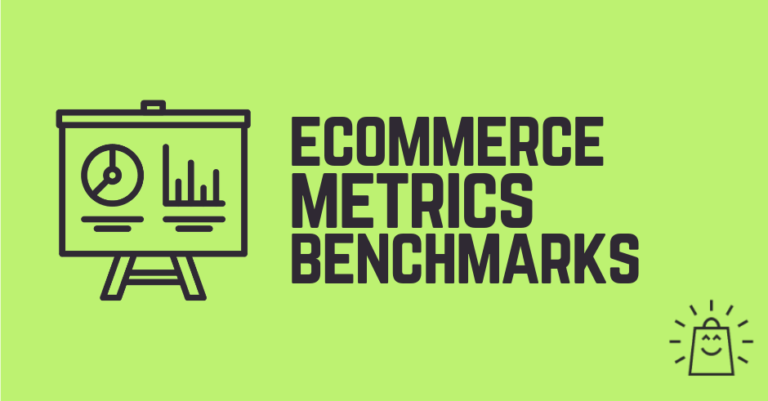2020 has been a year that most of us will be glad to put in the rearview mirror. While we may be happy to see the year come to a close, we’d be remiss if we let the milestone pass without conducting an eCommerce marketing post-mortem to analyze where we stand and set priorities for the year ahead.
Maybe you’re proud of the progress you made in 2020. On the other hand, maybe you’d rather wipe the year from your memory and start with a fresh slate in 2021. Either way, if we don’t look back and assess the year with a critical eye, we’re missing out on an important opportunity to collect data and gather intel—good or bad—that will serve in making better decisions in the future.
Reviewing Your 2020 eCommerce Marketing Performance
There are virtually endless marketing and performance metrics you can use to analyze how you did in 2020. The ones that matter most to you will depend on your industry, business model, the type of product you sell, and so on.
While these granular metrics are certainly helpful to look at, especially among your marketing team, there are a few high-level metrics that, when taken together, will give you a quick gut check on how you fared in 2020. Here are the ones we recommend starting with.
Top Line Revenue
Your “top line” revenue refers to your sales before expenses (also known as gross sales). In other words, how much money is coming in the door every month? This number is important from a marketing perspective because it indicates how successful you are at generating new sales–marketing’s key function.
Topline revenue is distinct from bottom-line revenue, which measures your net earnings after expenses. This number is equally important from a business standpoint but focuses more on how efficient you are at managing expenses and operating efficiently than bringing in sales.
Conversion Rate
How many of your website visitors are you converting into customers? This is another key high-level marketing metric because it indicates how effectively you’re managing the shoppers that you’re using your valuable eCommerce marketing dollars to attract.
If this number is lacking, you’re needlessly leaving money on the table and will want to make conversion rate optimization a high priority in 2021.
Size and Growth of Audience

Photo by Akil Mazumder
The change in the size of your audience year-over-year helps measure the growth of your brand awareness. If you don’t have a sufficient audience to market to, it’s going to take a lot more work and money to attract every new customer (which drives up the next metric we’ll talk about, customer acquisition cost). The more engaged subscribers you can attract, the easier marketing will be.
The target benchmark for audience growth will vary based on your buyer persona, price point, industry, and more, but ideally, we want to see consistent growth from month to month that coincides with your marketing efforts. So, if you ran a big campaign to attract new followers during the summer months, we’d expect to see a corresponding bump in audience size during that time.
Customer Acquisition Cost
Customer acquisition cost is the amount you have to spend, in total, to win a new customer. To calculate it, add up your total marketing and advertising costs for a given time frame and divide that sum by the number of new customers acquired. So, if you spent $5,000 on marketing in December and gained 500 new customers, your acquisition cost would be $10.
This number is important because it allows you to predict with a fair amount of accuracy whether your future marketing efforts will be profitable. If you know, for example, that it costs an average of $10 to win one new customer, then a Facebook ad with a $500 budget should net you at least 50 new customers. If it doesn’t, it’s underperforming. The more data you gather over time, the more accurate this calculation will be.
Lifetime Value
Lifetime value is one of the most useful, but in our opinion, underused metrics for measuring marketing performance. As its name suggests, it measures the value of one customer over the life of their entire relationship with your brand.
Why does this number matter? Because for most brands, a small handful of loyal customers are responsible for the majority of your revenue. The more you’re able to bump up the lifetime value of your repeat customers, the greater your long-term revenue will be. This can be done by prioritizing eCommerce marketing initiatives that build brand loyalty and bring customers back beyond a one-time purchase.
eCommerce Marketing Contribution To Overall Pipeline
Finally, what proportion of your overall sales can be attributed directly to your marketing efforts? If you’re not sure–or more importantly, if you’re not sure how to find this out–this is an important thing you need to focus on fixing in 2021. Having a clear and straightforward view of your revenue channels is key to being able to properly allocate your marketing spend and resources for maximum ROI.
Setting eCommerce Marketing Goals for 2021

Photo by Markus Winkler
As you dive into the numbers above, some insights should begin to emerge about where you could use more marketing focus in 2021.
For example:
- If your top-line revenue has decreased, you’ll want to take a closer look at marketing’s contribution to the overall pipeline to figure out where you’re spending money that’s not resulting in sales.
- When struggling to grow your audience, you’ll want to dedicate resources to reach new subscribers, like advertising, content marketing, and search engine optimization.
- If you have a large audience but a low conversion rate, you should focus on measures to optimize your website, like decreasing load times, lowering friction, and improving the checkout experience.
- If you have a high conversion rate but a low lifetime value, it indicates that you need to take further steps to win back repeat customers, like email nurturing sequences and retargeting ads.
- If you have a high customer acquisition cost, focusing on steps to lower your acquisition cost will improve your margins.
Don’t just glance at your metrics and set arbitrary 2021 goals like ‘we want to increase revenue by 20%.’ Instead, use them as a road map to point you in the specific direction of where your efforts need work. This way, you’ll identify targeted strategies that will make a difference for your brand and result in the most efficient use of your marketing resources.
Need some assistance charting a course for success or not sure where to begin? Springbot can help. Request your free demo of our all-in-one, data-driven marketing platform today to see how Springbot can help you automate your marketing and win more sales from every campaign in 2021.




